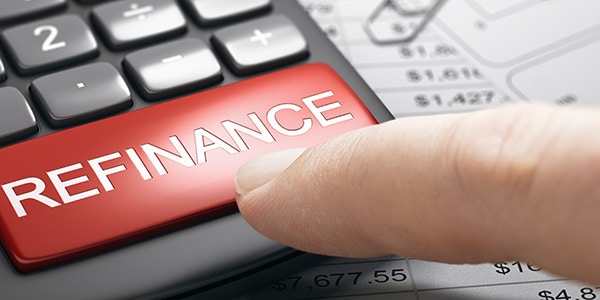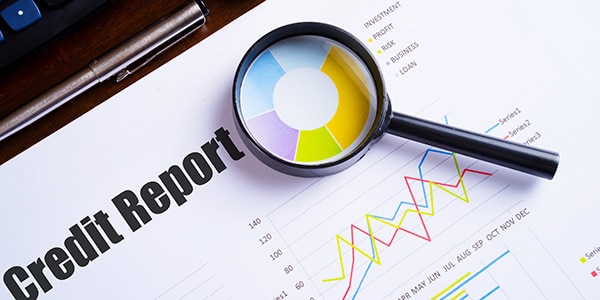Accidents, vandalism, theft — these are all risks that car owners must contend with. If your car can’t be recovered or repaired, you are looking at a total loss claim with your insurance company, something that can create financial strain if you are still paying off your car loan.
Fortunately, Guaranteed Asset Protection (GAP) offers significant protection against financial loss in these situations. GAP coverage ensures that you don’t have to pay the difference between your current loan balance and the compensation provided by your insurance company.
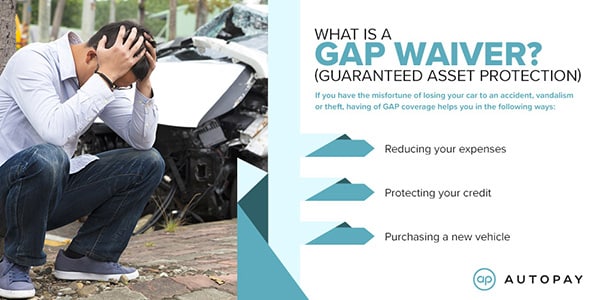
What Is Guaranteed Asset Protection (GAP)
Guaranteed Asset Protection, sometimes known as Guaranteed Auto Protection, is a financial product that addresses a common problem: The gap between the actual cash value (ACV) of your car, as determined by your insurance company, and what you still owe on your auto loan.
If you have the misfortune of losing your car to an accident, vandalism or theft, having GAP coverage helps protect your wallet and credit.
There are two types of GAP coverage: GAP waivers and GAP insurance. While both offer protection, they are two distinct products.
GAP Waivers vs. GAP Insurance
The primary difference is that GAP insurance is an insurance product, while a GAP waiver is an agreement between you and your lender:
GAP waivers: When you apply for a car loan or auto refinancing, your lender may offer you a GAP waiver as an add-on option. Purchasing the waiver means that your lender has agreed to waive the balance of your loan if your car is written off as a total loss by your insurer and the claim check does not cover the balance of your loan.
GAP insurance: This is optional insurance coverage that you purchase from an insurance carrier, not your lender. The terms of this insurance and how you purchase it will conform to your state’s insurance laws and regulations, but typically it’s something you add onto your car insurance policy.
Additionally, GAP waivers can only be purchased at the time of financing whereas GAP insurance may be added to your car insurance policy at any time.
How GAP Works
Guaranteed Asset Protection products address this problem by covering the “gap” between what insurance pays out and the balance of your auto financing loan.
If you are among the over 80 percent of car buyers in the United States driving a financed car, you’re at risk of a significant financial loss if your car is stolen or damaged. Here’s why:
You’ve probably heard it said that a vehicle loses value, a process known as “depreciation,” as soon as you drive it off the lot. The saying is true: Cars lose value quickly, even if you take good care of your vehicle. While most drivers don’t pay much attention to depreciation, insurance companies do.
If something were to happen to the car and you file a claim with your auto insurance company, your insurer will determine your vehicle’s actual cash value and cut a check based on that – not how much you still owe on your car’s loan.
And if you chose a longer loan term or didn’t make a large enough down payment (or both)? The difference between the actual cash value of your car and the amount you still owe on the loan could be even more significant — and you’ll still owe it, even if you no longer have that car.
Ideally, we would all pay off our car loans faster than our vehicles depreciate, but everyone’s situation is different, and not everyone can afford to do that. GAP waivers can help you keep a lower monthly payment on your car loan while protecting your wallet too.
An Example of GAP Protection
Here is an example from AUTOPAY showing how a GAP waiver could protect you in case of an auto accident or theft:
Your original loan amount: $25,000
Term: 60 months
Loss date: 36 months
Loan payoff due: $15,000
Insurance settlement: $10,000
Difference between insurance and payoff: $5,000
Plus insurance deductible: $500
What you owe (difference + deductible): $5,500
GAP waiver pays: $5,500
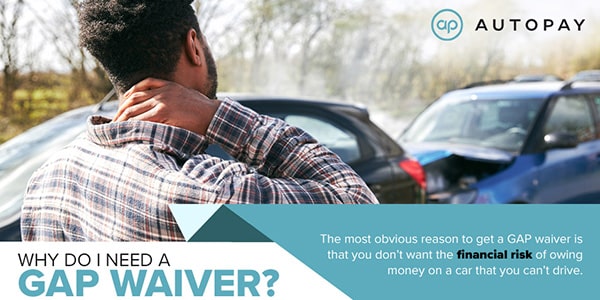
Why Get a GAP Waiver?
The most obvious reason to get a GAP waiver is that you don’t want the financial risk of owing money on a car that you can’t drive — or no longer have in your possession. But there are other financial advantages to purchasing a GAP waiver:
- If you don’t have GAP coverage and are left with a significant balance on your auto loan, that balance could impede your ability to finance a new vehicle, or may at least restrict you to less favorable terms. This is because account balances, including loan accounts, are reported to and by credit bureaus. Your overall debt load makes up part of your credit score.
- Even if you do secure financing for a new vehicle, you may be left with two loan payments to make each month. If you struggle to meet these obligations, you could be left with damaged credit.
- GAP waivers are either paid for upfront when you sign your loan agreement or, in some cases, are rolled into your loan. GAP insurance is a separate product and even one missed premium payment could threaten your coverage.
- Because you purchase a GAP waiver from your lender, the waiver is active as long as your loan is in repayment. If you purchase GAP insurance from your current auto insurer and, at some point, switch insurance companies, there is always the risk that you might forget to purchase GAP insurance to go with your new policy. Or, if your policy lapses due to nonpayment, you lose all of your insurance coverage. This could result in an unhappy (and very expensive) surprise.
Are There Reasons to Not Purchase GAP Coverage?
There may be some instances in which not purchasing GAP coverage might be the best decision for you. Here are some situations in which you might not want to secure GAP coverage:
Your loan-to-value ratio is below 100%. LTV is a percentage comparing your auto loan debt to the value of your car. A loan-to-value ratio above 100% means you’re upside down, or owe more on the vehicle than it is worth.
You have a relatively short repayment period. If you plan to pay off your car loan fast, then GAP protection might not be necessary, assuming you pay off the debt faster than your car depreciates.
You are confident that you have enough savings, or income, to cover any outstanding loan balance. GAP protects your finances, but if you’ve already established a fund to cover any potential leftover balance with ease, you may be able to forgo it.
Auto Refinancing and a GAP Waiver
The decision to purchase a vehicle or refinance an existing loan is a serious one that carries some significant risks. Purchasing GAP coverage can be one way to mitigate these risks, particularly if you have a long repayment period, are locked in to a high interest rate or are unable to make a large down payment.

